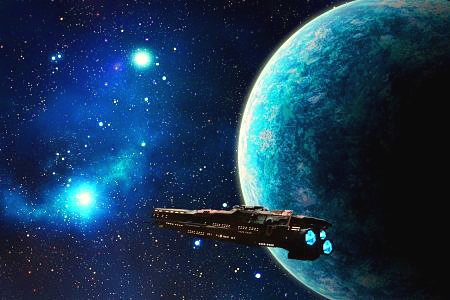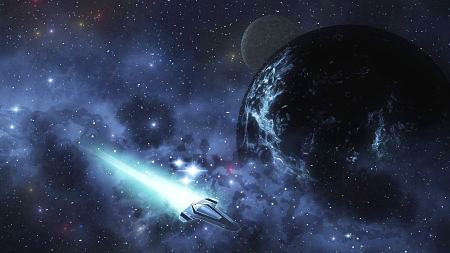At the minimum, we have no evidence to rule out the existence of an extraterrestrial vessel.
It’s useless to conceal the truth, so we’ll be honest. An extraterrestrial vessel is lurking in our cosmic neighborhood and it’s launching exploratory devices at Earth — likely for some sinister purpose.
Or that’s what a recent preliminary document from the Pentagon wants you to think.
The paper, by Harvard University astronomer Avi Loeb and Pentagon’s All-domain Anomaly Resolution Office (AARO) director Sean M. Kirkpatrick, argues that an extraterrestrial vessel’s existence in our cosmic vicinity is “energetically feasible.” They also propose that the vessel could be launching smaller entities into space to map it, like a dandelion’s seeds departing the stem.
The writers allege these “dandelion seeds” could possibly reach Earth. To back up their hypothesis, the pair refers to two distinct events.
Rephrase the following paragraph in 3 different ways, to avoid repetition, while keeping its meaning:
Oumuamua was a weird cigar-shaped asteroid that showed odd movement patterns and other peculiar phenomena. It visited our solar system in 2017. Do you recall it?
Moreover, a small meteor about three feet wide hit Earth six months after Oumuamua passed. Accidental?
Loeb disagrees. He and Kirkpatrick propose that the extraterrestrials could be launching similar entities into space from the mothership to somehow investigate intriguing planets.

Only Seeds Blowing in the Breeze
To be fair, they don’t appear to believe that Oumuamua and the rock that crashed on Earth were definitely alien probes. But Loeb says that the two cosmic objects sparked his thoughts.
Loeb told LiveScience that the nearness of the encounters made him “think about the possibility that an artificial interstellar object could possibly be a parent craft that launches many small probes during its close approach to Earth, an operational design not too different from NASA missions.”
“The tidal gravitational force of the Sun or a maneuvering capability could detach these ‘dandelion seeds’ from the parent craft.”
Loeb and Kirkpatrick explore the theory further in their paper. They propose that the probes could be using liquid water and starlight as their fuel.
They also assert that they could investigate Earth without us spotting them as they are potentially too small to show up on our telescopes.
The paper says that technological ‘dandelion seeds’ have a parachute-like large surface-to-mass ratio that would help them decelerate in the Earth’s atmosphere and prevent them from burning up. They could then achieve their goals wherever they end up landing.
The probes could either replicate themselves using the available raw materials on the ground or transmit information back to their extraterrestrial creators. However, we may not need to be concerned about alien access to Earth’s secrets.
Loeb and Kirkpatrick suggest that the probes’ builders may no longer exist. Intergalactic travel is so slow that the aliens could’ve died out thousands of years ago.
But that wouldn’t be known to the probe, would it?

Looking for a Grain in a Heap of Sand
It’s certainly a crazy theory. But Loeb thinks he can demonstrate it.
He believes he has an idea of where one of the probes could be.
In 2014, a meteor from outside our solar system — called CNEOS1 2014-01-08 — that was roughly 1.5 feet in size plunged into the Pacific Ocean close to Papua New Guinea. The meteor was composed of extremely hard rock — or perhaps even metal, according to space scientists.
The astronomer believes it could have been a probe. And he plans to locate it.
Loeb is launching a $1.5-million expedition to search the ocean floor and find the meteor’s remains. And when we say search, we mean it.
With the help of U.S. military, Loeb’s team have been able to pinpoint the object’s crash site to an area less than a square mile in size. The object’s remnants are on the ocean floor at a depth of slightly more than a mile.
But locating the thing won’t be any easier because of knowing where it is. The meteor shattered into very small pieces during its impact and flight.
So, Loeb’s team is essentially trying to locate strange grains of sand among regular grains of sand. And you thought searching for a needle in a haystack was difficult.
Loeb is optimistic about the expedition, however. If he can find anything that looks like technology… Well, he has his proof for alien life.
Loeb thinks that studying it will still be a triumph for science, even if the meteor proves to be a piece of rock.
“We will discover something new,” Loeb told The Daily Beast.
No one can dispute that Dr. Loeb has the fitting attitude for such a crazy journey.



